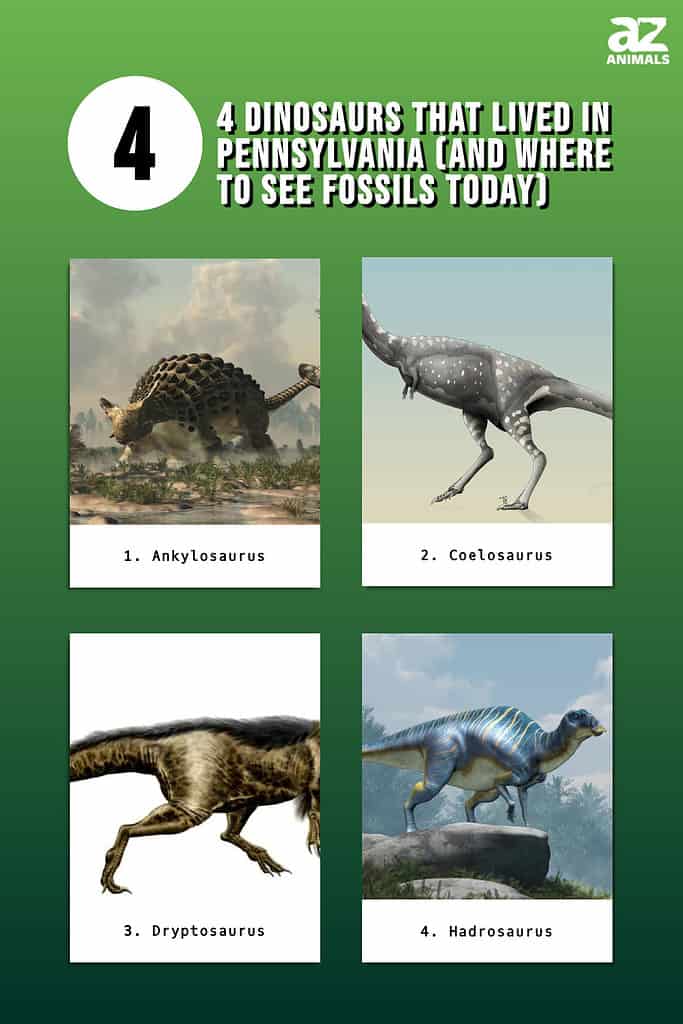
Dinosaurs and other pre-historic animals once roamed the lands we call Pennsylvania today. Although no living dinosaurs exist anymore, traces and fossils remain throughout Pennsylvania. Paleontologists and researchers have discovered that at least four dinosaurs lived in Pennsylvania. Which are they? Follow along to learn more about the four dinosaurs that lived in Pennsylvania and where to see fossils today.
1. Ankylosaurus
One of the dinosaurs that called Pennsylvania home and left evidence to prove it was Ankylosaurus, a group of quadrupedal herbivorous dinosaurs. These dinosaurs are thought to have bony plates and spikes on their bodies for protection and a clubbed tail. Interestingly, Native Americans have a long history with Ankylosauria‘s remains.
The Delaware people have stories about smoking the bones of monsters to have wishes granted. The bones were local Ankylosaurus fossils. While Native Americans used the remains long before European contact, they weren’t scientifically documented until 1833. In England, Ankylosaurus remains were found in Early Cretaceous rocks. Before Ankylosauria were named in 1923, they were considered members of the Stegosauria.
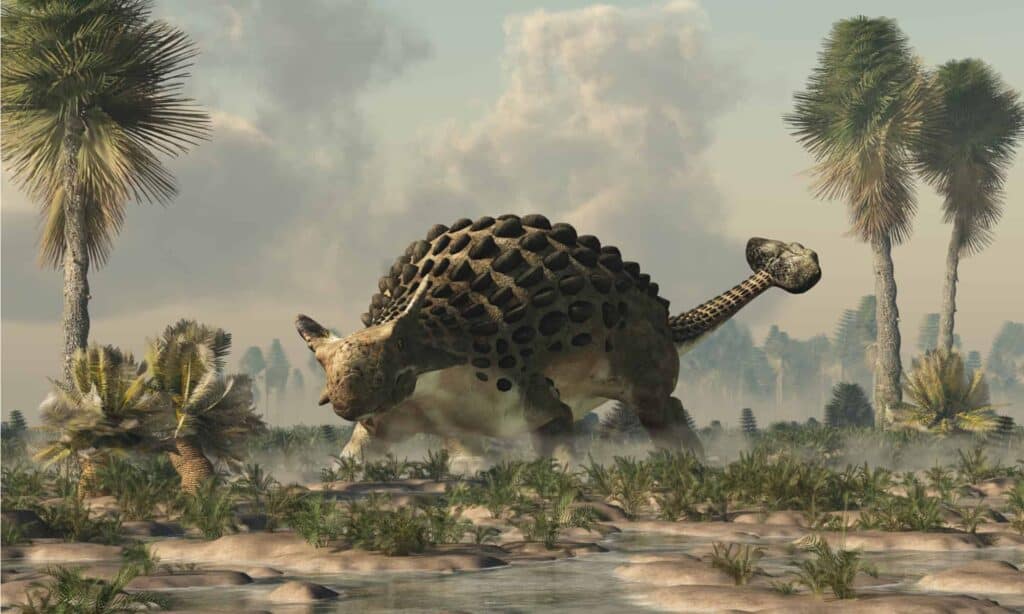
One of the dinosaurs that called Pennsylvania home and left evidence to prove it was
Ankylosaurus, a group of quadrupedal herbivorous dinosaurs
©Daniel Eskridge/Shutterstock.com
2. Coelosaurus
The Coelosaurus is a species of theropod dinosaur named in 1865 by Joseph Leidy. Coelosaurus antiquus translates to “antique hollow lizard.” Two tibiae were first found in the Navesink Formation of New Jersey. Currently, there is a debate over the classification of this dinosaur species. Some scientists believe it is a member of the genus Ornithomimus, while others don’t. We still don’t know much about dinosaurs, and their remains are constantly being re-examined. For example, previous Coelosaurus remains have been now assigned to Cryptotyrannus.

The
Coelosaurusis a species of theropod dinosaur that roamed Pennsylvania.
©Hypnoflow, CC BY-SA 4.0, via Wikimedia Commons – License
3. Dryptosaurus
Next is the Dryptosaurus, a genus of tyrannosauroid. These dinosaurs lived about 67 million years ago. Although more common in New Jersey, traces and fossils have been found in Pennsylvania. Dryptosaurus was a large dinosaur genus. Experts believed they were carnivores, growing up to 25 feet long. They likely weighed 1.7 short tons. While they aren’t the most popular dinosaurs in media, Charles R. Knight painted them in a famous painting, “Leaping Laelaps,” making Dryptosaurus very widely known during its time. However, Dryptosaurus was only first described by Edward Drinker Cope in 1866. Eleven years later, Othniel C. Marsh renamed the genus. There aren’t many fossil records.
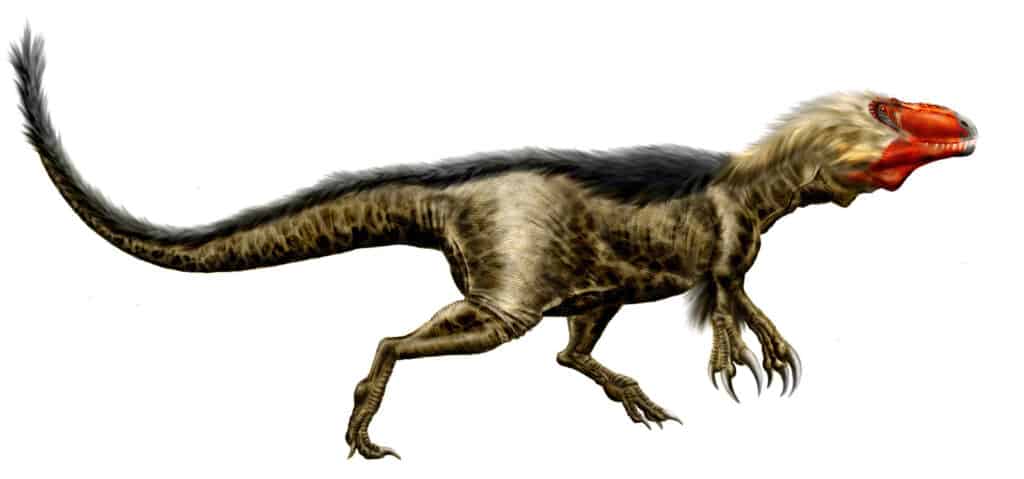
Although more common in New Jersey, traces and fossils of
Dryptosaurushave been found in Pennsylvania too.
©Josep Asensi: http://durbed.deviantart.com / CC BY 3.0 – License
4. Hadrosaurus
Last but not least, the Hadrosaurus also lived in North America. They roamed the earth about 80 to 78 million years ago. The name of the genus means “bulky lizard.” In the genus, there is only one species, the Hadrosaurus foulkii. It was discovered in 1858 in New Jersey. This was the first dinosaur species known from more than just fossil teeth. Hadrosaurus was about 23 to 26 feet tall. They weighed about 2.2 to 4.4 short tons. Something unique about this dinosaur is its shortened pectoral crest.
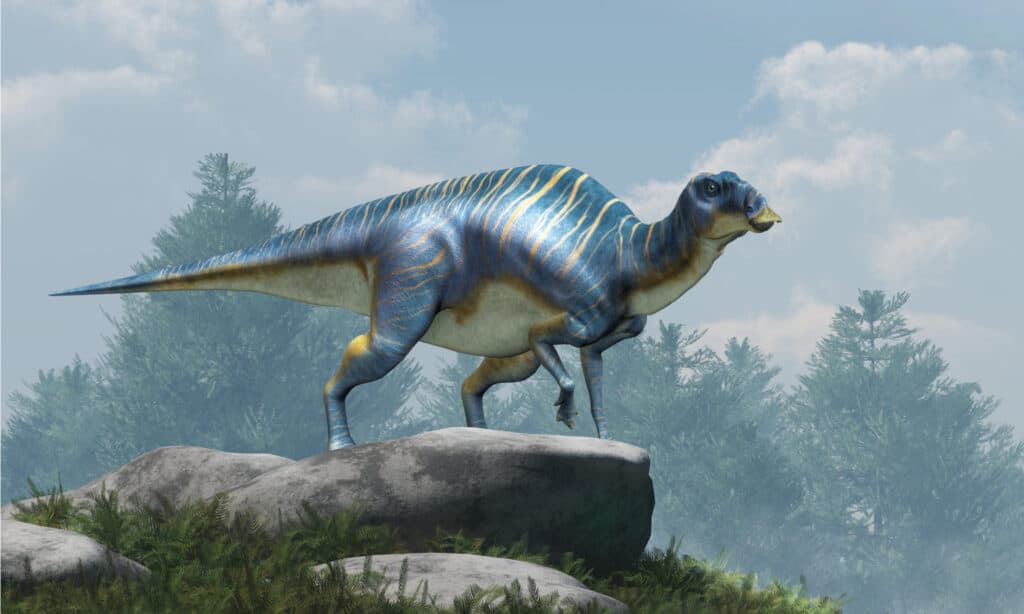
The
Hadrosaurus foulkiionce lived in Pennsylvania as well.
©Daniel Eskridge/Shutterstock.com
Other Pre-historic Fossils Found in Pennsylvania
Dinosaurs aren’t the only pre-historic animals to roam Pennsylvania. For example, you can see Coosia, a unique pre-historic marine arthropod now extinct. These well-known trilobites lived about 501 to 490 million years ago. They are from the Dresbachian faunal stage of the late Cambrian Period. One Coosia fossil was found in 1906 in Bucks County, Pennsylvania.
You can also find many pre-historic plant fossils in older rocks. Some common plant fossils in the state are Calamites horsetail trunks, Pecopteris seed ferns, and leaves from Lycopod scale trees. Cordaites are extinct gymnosperm trees that may have grown up to 100 feet tall. The leaves of this plant are long and narrow. Some leaves measure up to 27 inches long.
Where to Find Fossils in Pennsylvania
Fossil hunting isn’t easy, but it doesn’t have to feel impossible. However, it’s unlikely you’ll find many dinosaur fossils in Pennsylvania. While you might not have luck finding dinosaur fossils, plenty of open sites and parks feature plant fossils. One of the most popular fossil-finding spots is the Montour Preserve Fossil Pit. It has about one acre of exposed Mahantango Formation shale which formed during the Devonian Period about 395 million years ago. During this time, most of Pennsylvania was a warm, shallow sea. Pelecypods, Byrozoans, Crinoids, Gastropods, Corals, Cephalopods, Brachiopods, and Trilobites are common in this site. The best part about this fossil pit is that it is open to the public and free. You can take home any fossils you find.
While Montour Preserve Fossil Pit is a great place to search for fossils, you might also have luck taking a hike on a Pennsylvania nature trail. For example, many people have found fossils in Swatara State Park. The state park has a fossil pit where you can find countless marine fossils from the Devonian Era. Another state park you might want to try your luck at is Beltzville Lake State Park. The fossils there are about 365 million years old. When the dam for the lake was first built, it uncovered impressive spillway walls with many colorful stones and fossils.
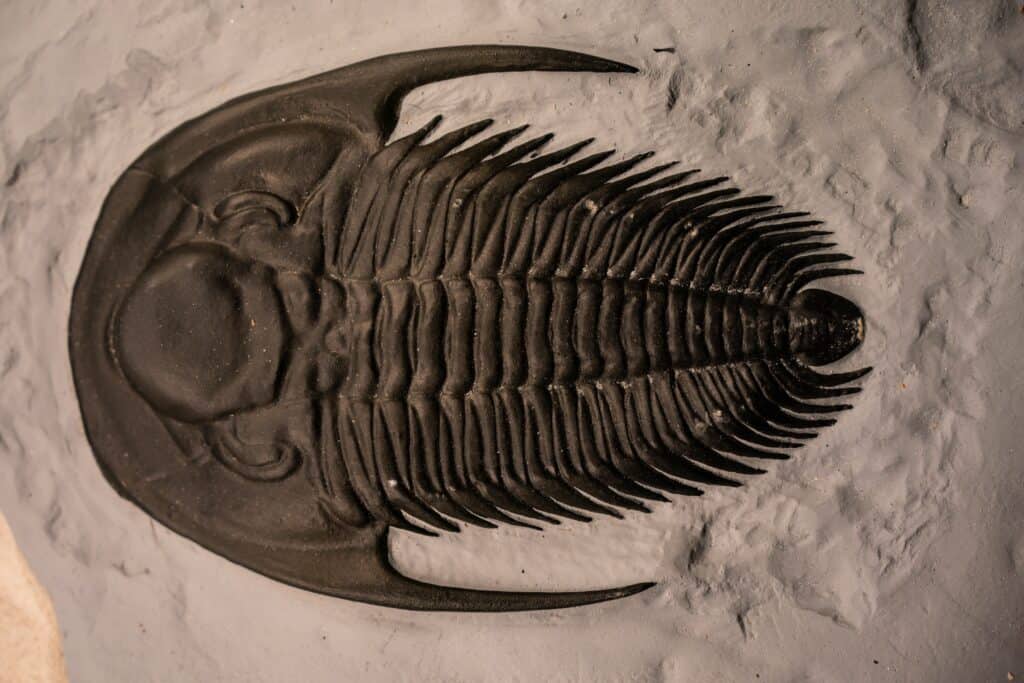
Trilobites are very commonly found in the Montour Preserve Fossil Pit.
©MBLifestyle/Shutterstock.com
The photo featured at the top of this post is © Artush/Shutterstock.com
Thank you for reading! Have some feedback for us? Contact the AZ Animals editorial team.






